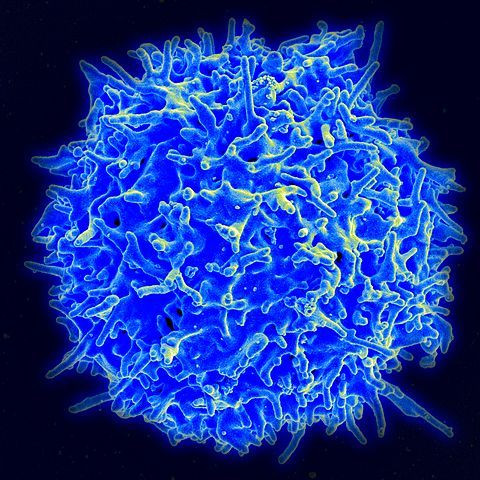DNA Vaccine Sends Type 1 Diabetes Into Reverse, Does Well In Clinical Trial

Most vaccines work by boosting immunity, but researchers have now tested a "reverse vaccine" that dampens the overzealous immune systems of people with type 1 diabetes. Results from a phase 1 clinical trial show the vaccine switched off some of the hallmarks of the disease.
Type 1 diabetes is triggered when a hyperactive immune system begins attacking beta cells in the pancreas that produce insulin. Without insulin, sugar begins to accumulate in the bloodstream, which can damage blood vessels, nerves, and major organs like the kidneys and heart.
Scientists at Stanford and Leiden University Medical Center in the Netherlands developed a vaccine that shuts down the part of the immune system — CD8 T cells — that are harming the pancreas.
The vaccine consists of a circular piece of DNA — called a plasmid — that carries genes for the insulin protein. This piece of DNA is soaked up by all of the cells in the body, and although this might seem counterintuitive, this extra exposure to insulin helps to tamp down overactive T cells and preserve insulin-producing beta cells.
Following a line of successful experiments in mice over the last decade, the researchers decided to try the vaccine in humans, and the results from a small clinical trial with 80 patients were published today in Science Translational Medicine.
The "reverse vaccine" reduced the number of CD8 T cells that target insulin-producing cells in diabetic patients. It also increased the levels of "C-peptides" in the blood, which is a marker of improved pancreatic function.
No adverse side effects were observed in any of the patients.
According to Reuters, the team has licensed the vaccine to the California-based biotech Tolerion, which is designing a longer study in as many as 200 patients to test whether the vaccine can slow or stop progression of the disease in younger patients, before too much damage has been done.
Accounting for only five percent of cases, type 1 diabetes is the less common variant of the disease. This still amounts to over 17 million across the globe with type 1 diabetes, which typically surfaces during childhood or adolescence. There is no cure.
Source: Roep BO, Solvason N, Gottlieb PA, et al. Plasmid-Encoded Proinsulin Preserves C-Peptide While Specifically Reducing Proinsulin-Specific CD8+ T Cells in Type 1 Diabetes. Science Translational Medicine. 2013.



























